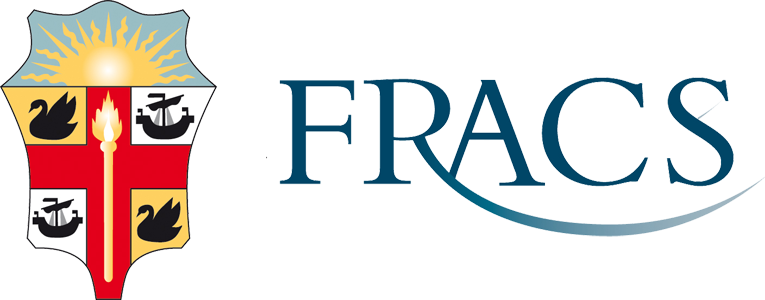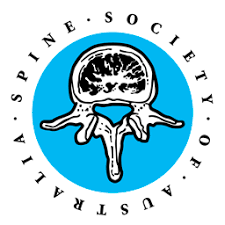Anterior Approach to Spine Surgery
Anterior Lumbar Interbody Fusion
What is Anterior Lumbar Interbody Fusion?
Anterior Lumbar Interbody Fusion (ALIF) is n operation performed from the front of the spine, where a damaged disc (or discs) is removed and replaced by a new plastic disc (cage filled with bone).
- Anterior- Front
- Lumbar- Lower back
- Interbody- Between vertebrae
- Fusion- Joining together of vertebrae
ALIF can treat various spinal conditions, including degenerative disc disease, spondylolisthesis (slippage of one vertebra over another), spinal instability, and certain spinal deformities.
Who is Suitable for Anterior Lumbar Interbody Fusion?
Generally, ALIF is considered appropriate for individuals who:
- Have significant pain or neurological symptoms in the lower back or legs due to a specific lumbar spinal condition.
- Have tried conservative treatments such as medication, physical therapy, and injections without significant improvement.
- Have Symptomatic Degenerative Disc Disease (DDD), Discogenic pain, Foraminal stenosis, or Grade 1 spondylolisthesis.
- Do not have severe deformities or extensive damage to the spine's posterior (back) structures.
- Are in good overall health, without significant medical conditions that would increase the risks of surgery.
However, the final decision about the suitability of ALIF is made individually after a thorough evaluation by a spine specialist, considering the patient's unique circumstances and medical history.
Benefits of Anterior Lumbar Interbody Fusion
The benefits of Anterior Lumbar Interbody Fusion (ALIF) include:
- Increased fusion rates: ALIF has shown higher fusion rates than other spinal fusion techniques, primarily due to a large bone graft or interbody implant placed directly into the disc space.
- Improved stability: By removing the damaged intervertebral disc and replacing it with a bone graft or implant, ALIF helps restore stability to the spine, reducing pain and preventing further degeneration.
- Reduced nerve compression: ALIF can alleviate pressure on the spinal nerves by decompressing the affected area, decreasing pain and improving neurological function.
- Corrects spinal deformities: ALIF can help realign the spine and correct deformities for conditions such as spondylolisthesis or scoliosis.
- Minimally invasive approach: While ALIF is a surgical procedure, it can be performed using minimally invasive techniques, resulting in smaller incisions, reduced tissue damage, less blood loss, and faster recovery than traditional open surgeries.
Types of Anterior Lumbar Interbody Fusion
- Stand-alone ALIF: In this approach, the intervertebral disc is removed and replaced with a bone graft or interbody implant. Additional posterior instrumentation (screws, rods, or plates) may or may not be used.
- ALIF with posterior instrumentation: In some cases, to enhance stability, screws, rods, or plates may be added to the posterior (back) of the spine in conjunction with ALIF. This combination provides additional support during the fusion process.
Preparation for Anterior Lumbar Interbody Fusion
Tell Mr Malham about any medical conditions or previous operations. Suppose you have a medical condition such as diabetes, heart problems, high blood pressure or asthma. In that case, Mr Malham may arrange for a specialist physician to see you for a pre-operative assessment and medical care following the neurosurgery.
Inform Mr Malham of the medication you are taking and/or have allergies to medications. You must stop using the following ten days pre-operatively:
- Aspirin
- Plavix
- Isocover
- Asasantin
You must stop using blood thinning medication (such as Warfarin) 3-5 days pre-operatively.
Pre-operative investigations may include:
- Flexion extension lumbar x-rays - to exclude instability (abnormal movement)
- CT Lumbar Scan to assess bone anatomy and the posterior facet joints
- MRI lumbar scan to assess soft tissue and especially disc injury, prolapse, nerve root and thecal sac compression, ligament damage, vertebral endplate oedema, tumour and infection
- Bone scan to exclude cancer, infection, fracture, and severe degenerative (wear and tear) changes. (Identifies pain generators, especially facet joints)
- DEXA (bone density scan) to assess for osteoporosis
- Assessment by a vascular surgeon, who will assist with the ‘Anterior Abdominal’ approach in surgery.
Anterior Lumbar Interbody Fusion Procedure
A “Cell-Saver” machine is used to clean the recycled and any lost blood back to you during the operation.
Positioned supine in a lithotomy position.
Image intensifier identification and marking of disc level on the skin. Right lower transverse abdominal skin incision for L5/ S1 disc level, or vertical lower abdominal skin incision (midline) for L4/S disc level.
Opening of anterior and then posterior rectus sheath. The left rectus muscle is then retracted to the right. Dissection in retroperitoneal plain. Bowel moved to the right. Psoas muscle was identified. Left ureter protected and swept to the right. Identification of left common iliac artery, then underlying left common iliac vein.
To approach the L4/5 disc, dissection lateral to iliac vein identifying, ligating and then dividing ascending lumbar vein. This enables the iliac artery and vein to be moved to the right, exposing the L4/5 disc.
To approach L5/S1 disc, dissection medial to the iliac vein. The inferior hypogastric plexus is swept to the right, exposing the L5/S1 disc between the left and right iliac vein and artery.
Special retractors are then used to carefully hold “out of the way and protect” the bowel, ureter, iliac arteries and veins. These retractors are connected to a frame connected to the operating table.
A lateral image intensifier is used to confirm the disc level, and the AP image intensifier marks the midline.
Discectomy is performed, removing the entire damaged disc.
The posterior osteophytes (bony spurs) are removed.
The exiting nerve roots are decompressed.
The posterior longitudinal ligament may be opened.
The upper and lower vertebral endplates are cleaned of any soft tissue.
The trial implant enables the correct size “cage” implant to be chosen. The cage is trapezoid in shape and wider at the front than behind, restoring the normal lumbar curve or lordosis. The cage is made with ‘Space Age Plastic’, PEEK (Poly Ether Ether Ketone), with an attached titanium plate enabling three titanium screws to fix the cage to the above and below vertebrae. It is filled with bone morphogenic protein (Infuse, BMP-2) to avoid the need to harvest iliac crest (hip) bone graft. The cage is then impacted into the disc space, and the optimal position is confirmed with the image intensifier.
The retractor blades are then carefully removed. The bowel, iliac arteries and veins are inspected carefully to exclude damage.
The wound is closed in layers with suturing of the posterior and anterior rectus sheath, subcutaneous layers and dissolving sutures to the skin.
You are then woken from general anaesthesia, and the breathing tube is removed.
A CT Scan will be required on Day 2.
After an Anterior Lumbar Interbody Fusion
- Nil by mouth until the return of bowel sounds and passing flatus. (The bowel goes to sleep after lumbar surgery, and if you eat too soon, you risk nausea or vomiting);
- Keep your back straight;
- Stand and walk for 30 minutes each time;
- Lie down as often as you wish;
- Remember to bend your knees;
- Sleep on your back, side or front (whatever is comfortable);
- Avoid bending and twisting at the waist;
- Sit for meals only for 20 – 30 minutes maximum in a straight chair. Ensure that the height of the chair is correct for you, with the level of your hips above your knees;
- Walk four equal walks per day rather than one long walk. Aim initially for five and then 10 minutes, building up over 4 – 6 weeks to 30 minutes 4 times per day;
- Car travel as a passenger only for short distances (less than 30 minutes) in the first four weeks
Anterior Lumbar Interbody Fusion Prognosis
Generally, ALIF has a favourable prognosis, with 70 - 80% of patients reporting significantly improved pain, function and reduced analgesic requirements. 20% of patients will be the same after the operation, and approximately 5% will worsen with increased pain and reduced function.
Anterior Lumbar Interbody Fusion Risks
The total risk of surgical complications is 3%. The medical risks of any operation are infection, bleeding, drug allergy, heart attack, DVT, pulmonary embolism, pneumonia, urinary tract infection, general anaesthesia and death.
Specific risks from the front are:
- Bowel and ureter damage;
- Blood vessel injury and bleeding, especially from the left iliac vein;
- Distal emboli (small pieces of blood clot can break off from the retracted left iliac artery and cause clots in the left leg);
- Retrograde ejaculation in males (during sex, when a man ejaculates, the sperm goes back up into the bladder rather than out of the penis due to damage to the inferior hypogastric nerve plexus). Risk is 2% and highest at L5/S1 disc level. Hence the recommendation of men of child-producing age donating a sperm sample preoperatively.
Blood transfusion is uncommon, and the need for this is reduced using the “Cell-Saver”, a machine used during the operation. Any blood loss from the patient is filtered and returned to the patient, thus minimising the risk of blood transfusion.
Lumbar Total Disc Replacement
What is Lumbar Total Disc Replacement?
The discs in your spine act as shock absorbers, positioned between the blocks of bone called the vertebra. A disc comprises an outer wall of oblique fibres called the Annulus Fibrosus and an inner gel containing protein and water called the Nucleus Pulposus. The discs are flexible, allowing the spine to bend forward (flexion), backwards (extension), sideways (lateral flexion) and rotate.
Lumbar Total Disc Replacement (LTDR) is a type of surgical procedure that involves removing a damaged or diseased disc in the lower part of the spine (lumbar region) and replacing it with an artificial disc. This procedure aims to alleviate back pain while maintaining or restoring the natural motion of the spine.
What is an Artificial Disc?
An Artificial Disc is a device that can be implanted into the spine, replacing the damaged disc to permit normal load bearing and motion of the spine.
The Artificial Disc is also called a disc replacement, disc prosthesis or arthroplasty device. With total disc replacement, most of the disc tissue is removed, and the artificial disc is inserted into the disc space between the vertebrae.
Artificial Discs have two cobalt-chromium metal plates; one is attached to the vertebra above the disc being replaced and the other to the vertebra below. A central core, either metal or plastic (called polyethylene), is between the two plates, permitting motion in the ball and socket principal. The devices allow motion by smooth curved surfaces gliding across each other.
Who is Suitable for Lumbar Total Disc Replacement?
An LTDR is used in symptomatic disc degeneration with discogenic pain without significant facet joint disease.
Before the development of Artificial Discs, the only surgical option was fusion, where adjacent vertebral bodies were fused using interbody cages and bone after removing the damaged disc.
Benefits of Lumbar Total Disc Replacement
The goal of Artificial Disc replacement is to:
- Maintain motion, not restore motion at the affected disc level;
- Reduce the loading and stress on the adjacent disc levels.
Artificial Disc replacement is usually performed in patients under 55 years of age.
Certain conditions prevent a patient from receiving an artificial disc. These include marked loss of disc space height, thin bones (osteoporosis), a slip of one vertebra across another (called spondylolisthesis), vertebral body fracture, spine tumour or infection, significant wear and tear arthritis in the small facet joints at the back of your spine or allergies to the materials in the artificial disc device. In addition, significant surgery to the front (anterior) of your neck or abdomen, previous radiotherapy or morbid obesity may prevent access to insert the artificial disc device into your neck or lumbar spine.
Potential Advantages of Artificial Disc Replacement Versus Fusion
After removing the painful disc and relief of the spinal cord or nerve root compression, the Artificial Disc allows motion at the operated level.
In contrast to fusion, where the vertebrae above and below the damaged disc are fused, the Artificial Disc may reduce the wear and tear risks to discs above and below the operated level.
The Artificial Disc may permit a more rapid return to activities than fusion surgery.
The patient is encouraged to return to gradual progression and normal motion early in the postoperative period.
Preparation for a Lumbar Total Disc Replacement
Tell Mr Malham about any medical conditions or previous operations. Suppose you have a medical condition such as diabetes, heart problems, high blood pressure or asthma. In that case, Mr Malham may arrange for a specialist physician to see you for a pre-operative assessment and medical care following the neurosurgery.
Inform Mr Malham of the medication you are taking and/or have allergies to medications. You must stop using the following ten days pre-operatively:
- Aspirin
- Plavix
- Isocover
- Asasantin
You must stop using blood thinning medication (such as Warfarin) 3-5 days pre-operatively.
Single and Two Level Disc Injuries
- Single-level cervical and lumbar disc injury - One-level Artificial Disc Replacement is appropriate. Single-level cervical and lumbar adjacent segment disease above a previous fusion level - one-level Artificial Disc Replacement is appropriate.
- Two-level cervical disc injuries - Two-level Artificial Disc Replacement is appropriate. Two level lumbar disc injuries at L4/5 and L5/S1 - perform “Hybrid” surgery with L5/S1 Anterior Lumbar Interbody Fusion (to provide stable base) and then L4/5 Artificial Disc Replacement (to maintain motion above and reduce risk of adjacent segment disease).
Choice of Artificial Disc Prosthesis
Mr Malham is credentialed to use the Prestige, Prodisc-C, Mobi-C, Synergy, Maverick and M6 Lumbar prostheses. He has lectured, taught courses and attends regular national & international conferences on Artificial Disc Replacements.
Mr Malham’s preferred prostheses since 2004 are the Prestige and Synergy in the cervical or neck and Maverick with M6 in the lumbar region. This choice is based on the safety, stability (resistance to shear forces) and results these devices provide. All devices are TGA approved in Australia and FDA-approved in the U.S.A.
Mr Malham has no financial arrangement or benefits from using these prostheses.
Lumbar Total Disc Replacement Procedure
- Anaesthesia: The procedure is typically performed under general anaesthesia, so you'll be asleep and not feel anything.
- Incision: The surgeon usually makes an incision in the abdomen to access the lumbar spine. This approach avoids disrupting the muscles and nerves in the back.
- Disc Removal: The surgeon will remove the damaged or degenerated disc, not harming nearby structures.
- Implant Placement: The surgeon will insert the artificial disc into the empty disc space, securing it to the vertebrae above and below.
- Closure: The incision will then be closed with stitches or staples.
Lumbar Total Disc Replacement Recovery Plan
- You'll likely stay in the hospital for a few days post-surgery. Pain management will be a priority, and physical therapists will help you with early mobilisation.
- No lumbar brace is needed post-operatively. Sensible normal activity is advised.
- Avoid bending, twisting, heavy lifting and activities above shoulder height in the first four weeks following surgery.
- Patients can sit for meals for 20 - 30 minutes.
- Car travel is permitted as a passenger for short distances. Driving can be resumed four weeks postoperatively after assessment by Mr Malham.
- Walk four equal small walks per day and undertake a home exercise programme provided to you by the physiotherapist whilst in the hospital.
- Outpatient physiotherapy can be resumed after your 4-week post-operative review by Mr Malham.
Lumbar Total Disc Replacement Prognosis
The Lumbar Artificial Disc Replacement improves low back pain in 70 - 80% and lower limb pain in 80% of patients. No change in symptoms occurs in 10 - 20%.
Lumbar Total Disc Replacement Risks
The total risk of lumbar artificial disc replacement is 3 - 5%. Specific risks are bowel injury, ureter damage, bleeding from large retroperitoneal iliac arteries or veins, emboli (blood clots) to lower limbs and retrograde ejaculation in males.
General risks associated with any surgical procedure are heart attack, pneumonia, blood clots in the legs (DVT), which can travel to the lungs (pulmonary embolism), stroke, drug reaction, general anaesthesia and death.
What if Lumbar Total Disc Replacement is Delayed?
If LTDR is delayed, it might result in prolonged discomfort and activity limitation due to chronic back pain. The degenerative process may continue and possibly worsen. However, delaying this surgery doesn't generally cause additional harm to the spine, assuming conservative measures are used to manage symptoms. As always, any decision related to the timing of surgery should be discussed with your surgeon, considering your specific condition and circumstances.



